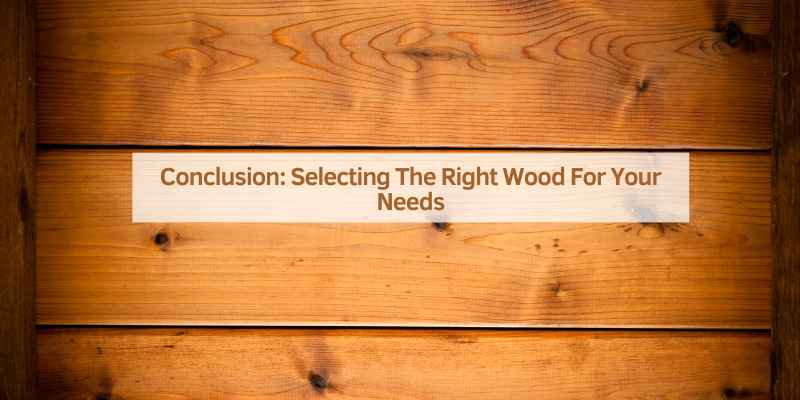Redwood is similar to cedar in terms of appearance, durability, and resistance to decay. Both woods are commonly used for outdoor projects.
Cedar and redwood are popular choices for outdoor applications. They both offer natural resistance to insects and decay, making them ideal for decking, fencing, and siding. Their rich colors and aromatic qualities add to their appeal. Cedar tends to be lighter in color with a distinctive aroma, while redwood has a deeper, reddish hue.
Both types of wood weather to a beautiful silver-gray if left untreated. They are also easy to work with due to their relatively soft texture. Choosing between the two often comes down to personal preference and regional availability.
Introduction To Cedar And Its Unique Qualities
Cedar wood has a special scent. This scent is loved by many people. The smell comes from natural oils in the wood. These oils help keep bugs away. People use cedar to make closets and chests. These items smell nice and protect clothes.
Cedar is very strong and long-lasting. It does not rot easily. This makes it great for outdoor use. Cedar is also resistant to bugs and decay. This wood can handle tough weather. People use it for fences, decks, and furniture.

Key Factors In Choosing A Cedar Alternative
Cedar has a beautiful, rich color. It’s also known for its unique grain patterns. Many people love the way it looks. Redwood is a good match for cedar. It has a similar color and grain. Redwood also ages well. Another option is Cypress. It has a lighter color but a lovely grain. Cypress can be stained to look like cedar.
Cedar is resistant to rot and insects. This makes it great for outdoor use. Redwood also shares these qualities. It is durable and strong. Cypress is another good choice. It resists rot and bugs too. Both of these woods can be used for decks, fences, and siding.
Redwood: A Close Cousin To Cedar
Redwood and cedar look very similar. Both have a rich, reddish-brown color. They also have a fine, even texture. The grain patterns are straight and uniform. This makes them both attractive for furniture and decking. Redwood is also lightweight, just like cedar. Both woods are easy to work with. They can be cut, sanded, and stained easily. These similarities make redwood a good alternative to cedar.
Redwood lasts a long time. It is naturally resistant to rot and decay. This is similar to cedar’s durability. Both woods can withstand harsh weather. Maintaining redwood is simple. A coat of sealer can protect it for years. Regular cleaning keeps it looking fresh. Just like cedar, redwood does not need much maintenance. This makes it a great choice for outdoor projects.
Cypress: The Water-resistant Contender
Cypress is known for its amazing rot resistance. This makes it great for outdoor use. The wood has natural oils that keep it from decaying. These oils help the wood last a long time. People often choose cypress for fences and siding. The wood stays strong even in wet conditions.
Cypress and cedar look very alike. Both have a warm, reddish hue. The grain patterns are similar too. Many people can’t tell them apart. Cypress can be a good alternative if you like cedar’s look. The two woods can be used together in projects.
Douglas Fir: The Sturdy Alternative
Douglas Fir is a very strong wood. It can hold heavy weights. This makes it great for building. It does not bend easily. This wood is very stiff. It is perfect for making beams and frames. Builders love it for its strength.
Treating Douglas Fir helps it last longer. It protects the wood from bugs and rot. You can use special oils or paints. These treatments keep the wood safe. Treated Douglas Fir can stay strong for many years.
Pine: The Accessible And Versatile Option
Pine is a versatile wood that many people use for furniture and building. Pine can mimic cedar in many ways. It is easy to find and often cheaper than cedar.
Pine’s Variability In Quality
The quality of pine can change a lot. Some pine is very strong and lasts long. Other pine may not be as strong. The quality depends on the type of pine and where it grows. Always check the wood before buying.
Protective Treatments For Pine
Pine needs protection to last long. Pine is soft and can get damaged easily. Using paint or stain can help. Applying a sealant makes pine more durable. This way, it can last as long as cedar.
Teak: The Luxurious Substitute
Teak wood is very similar to cedar in many ways. Both have a rich color and fine grain. Teak is known for its natural oils that make it resistant to water and pests. Cedar also has natural oils, making it a great choice for outdoor furniture. Teak and cedar are both durable and long-lasting. They can withstand harsh weather conditions. Teak has a more golden hue, while cedar tends to be reddish-brown.
Teak is often more expensive than cedar. This is due to its luxurious appearance and high durability. Cedar is a more affordable option but still offers excellent quality. Investing in teak can add value to your home. Cedar provides a similar look at a lower cost. Both woods are excellent choices for furniture and outdoor structures.
Accoya Wood: The Engineered Match
Accoya wood is a strong and durable option. It is engineered to last for decades. The wood goes through a special process. This process makes it resistant to rot and decay. Accoya is also dimensionally stable. This means it does not warp or swell. The wood is perfect for outdoor use. It can be used for decking, windows, and doors. Homeowners and builders love its low maintenance needs. Accoya wood is a great choice for any project.
Accoya wood is an eco-friendly choice. The wood comes from sustainably managed forests. It has a low carbon footprint. The modification process is also environmentally friendly. Accoya does not use harmful chemicals. This makes it safe for the environment. The wood is also 100% recyclable. This means it can be reused after its life as a product. Choosing Accoya wood helps protect the planet.
Comparative Analysis Of Cedar Alternatives
Pine is often cheaper than cedar. Pine wood is also readily available. Another alternative is spruce. Spruce is affordable and found in many regions. Redwood is similar in cost to cedar. Redwood can be more expensive than pine and spruce. Cypress is another option, though it might be pricier. Cypress availability varies by location.
Pine grows quickly and is renewable. Pine forests are managed for sustainability. Spruce is also a fast-growing tree. Spruce trees help in sustainable forestry practices. Redwood has a longer growth cycle. Redwood forests are protected for conservation. Cypress is known for its natural durability. Cypress wood requires fewer chemicals for treatment.
Conclusion: Selecting The Right Wood For Your Needs
Choosing the right wood similar to cedar ensures durability and aesthetic appeal. Consider redwood or cypress as great alternatives. Both offer comparable qualities like resistance to decay and a beautiful finish.
Balancing Cost And Quality
Budget is a key factor when selecting wood. Cedar is often expensive. Some alternatives cost less but offer similar qualities. Redwood is a good option. It is durable and resists decay. Pine is another choice. It is cheaper but needs more maintenance. Cypress is also similar. It has a natural resistance to insects.
Final Thoughts On Personal Preferences
Personal taste matters in choosing wood. Some people love the smell of cedar. Others prefer the look of redwood. Pine is lighter in color. Cypress has a unique grain. Try to see and touch different woods. This helps you make the best choice.

Frequently Asked Questions
What Timber Is Similar To Cedar?
Redwood, cypress, and pine are similar to cedar. They share similar durability, appearance, and resistance to decay.
What Hardwood Looks Most Like Cedar?
Redwood most closely resembles cedar in appearance. Both have similar color tones and grain patterns. Redwood is durable and decay-resistant.
What Wood Stain Matches Cedar?
To match cedar, use a semi-transparent stain with a natural cedar or redwood tint. This enhances cedar’s natural beauty.
What Is A Good Substitute For Cedar Siding?
Fiber cement siding is a great substitute for cedar siding. It offers durability, low maintenance, and a similar appearance.
Conclusion
Finding wood similar to cedar can enhance your projects. Consider options like redwood, cypress, and western red cedar. Each offers unique benefits and aesthetics. Evaluate your specific needs to choose the best wood. Your choice will ensure durability and beauty, making your project a success.


